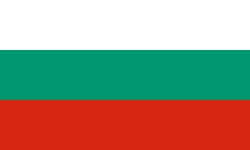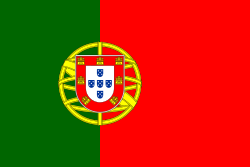Programmeringsolympiaden
Programmeringsolympiaden, Internationella programmeringsolympiaden, International Olympiad of Informatics (IOI), är en årlig internationell tävling för ungdomar upp till och med gymnasienivå, som tävlar i att skapa datorprogram som löser olika problemställningar av praktisk eller matematisk karaktär. IOI är en av de internationella vetenskapsolympiaderna.
Varje deltagande land skickar upp till fyra deltagare som tagits ut i någon form av nationell kvalificeringstävling. I Sverige kallas också kvalificeringstävlingen för Programmeringsolympiaden.[1]
Under olympiaden tävlar man under två tävlingsdagar, med c:a tre till fyra uppgifter vardera dagen. För att uppnå full poäng på en uppgift måste man konstruera ett program som ger korrekt resultat med alla uppsättningar av testdata och som dessutom exekveras (körs) inom den uppsatta maximitiden (som kan röra sig om bråkdelar av en sekund).
Den första tävlingen hölls 1989 i Bulgarien, och Sverige deltog för första gången 1990. Vid de senaste årens tävlingar har närmare 300 tävlande från över 70 länder deltagit. År 2003 nådde Sverige sitt bästa resultat någonsin med två guldmedaljer och två silvermedaljer.[2] Sverige har även placerat sig på en delad förstaplats två gånger, 1992[3] och 1993[4].
Tävlingar
De senaste åren har olympiaden arrangerats i:
| Nummer | År | Datum | Värdland | Värdstad |
|---|---|---|---|---|
| 1 | 1989 | 16–19 maj | Pravets | |
| 2 | 1990 | 15–21 juli | Minsk | |
| 3 | 1991 | 19–25 maj | Aten | |
| 4 | 1992 | 11–21 juli | Bonn | |
| 5 | 1993 | 16–25 oktober | Mendoza | |
| 6 | 1994 | 3–10 juli | Haninge kommun | |
| 7 | 1995 | 26 juni – 3 juli | Eindhoven | |
| 8 | 1996 | 25 juli – 2 augusti | Veszprém | |
| 9 | 1997 | 30 november – 7 december | Kapstaden | |
| 10 | 1998 | 5–12 september | Setúbal | |
| 11 | 1999 | 9–16 oktober | Antalya-Belek | |
| 12 | 2000 | 23–30 september | Beijing | |
| 13 | 2001 | 14–21 juli | Tammerfors | |
| 14 | 2002 | 18–25 augusti | Yong-In | |
| 15 | 2003 | 16–23 augusti | Kenosha, Wisconsin | |
| 16 | 2004 | 11–18 september | Aten | |
| 17 | 2005 | 18–25 augusti | Nowy Sącz | |
| 18 | 2006 | 13–20 augusti | Mérida, Yucatán | |
| 19 | 2007 | 15–22 augusti | Zagreb | |
| 20 | 2008 | 16–23 augusti | Cairo | |
| 21 | 2009 | 8–15 augusti | Plovdiv | |
| 22 | 2010 | 14–21 augusti | Waterloo, Ontario | |
| 23 | 2011 | 22–29 juli | Pattaya | |
| 24 | 2012 | 23–30 september | Sirmione och Montichiari | |
| 25 | 2013 | 6–13 juli | Brisbane | |
| 26 | 2014 | 13–20 juli | Taipei | |
| 27 | 2015 | 26 juli – 2 augusti | Almaty | |
| 28 | 2016 | 12–19 augusti | Kazan | |
| 29 | 2017 | 28 juli – 4 augusti | Teheran | |
| 30 | 2018 | 1–8 september | Tsukuba | |
| 31 | 2019 | 4–11 augusti | Baku | |
| 32 | 2020 | 13–19 september | uppkopplad | |
| 33 | 2021 | 19–25 juni | uppkopplad | |
| 34 | 2022 | 7–15 augusti | Yogyakarta | |
| 35 | 2023 | 28 augusti – 4 september | Szeged | |
| 36 | 2024 | 1–8 september | Alexandria | |
| 37 | 2025 | 27 juli – 3 augusti | Sucre | |
| 38 | 2026 | |||
| 39 | 2027 | Potsdam |
Se även
Referenser
- ^ ”Programmeringsolympiaden Sverige”. http://progolymp.se. Läst 13 september 2014.
- ^ ”Sveriges IOI-resultat”. http://stats.ioinformatics.org/delegations/SWE. Läst 13 september 2014.
- ^ ”IOI resultat 1992”. http://stats.ioinformatics.org/results/1992. Läst 2 april 2016.
- ^ ”IOI resultat 1993”. http://stats.ioinformatics.org/results/1993. Läst 2 april 2016.
Externa länkar
Media som används på denna webbplats
Färg som används: National flag | South African Government and Pantone Color Picker
| grön | rendered as RGB 0 119 73 | Pantone 3415 C |
| gul | rendered as RGB 255 184 28 | Pantone 1235 C |
| röd | rendered as RGB 224 60 49 | Pantone 179 C |
| blå | rendered as RGB 0 20 137 | Pantone Reflex Blue C |
| vit | rendered as RGB 255 255 255 | |
| svart | rendered as RGB 0 0 0 |
Flag of Portugal, created by Columbano Bordalo Pinheiro (1857–1929), officially adopted by Portuguese government in June 30th 1911 (in use since about November 1910). Color shades matching the RGB values officially reccomended here. (PMS values should be used for direct ink or textile; CMYK for 4-color offset printing on paper; this is an image for screen display, RGB should be used.)
Det är enkelt att lägga till en ram runt den här bilden
Kanadas flagga, införd 1965; denna version med Pantone‐nyanser. Nuvarande utformning ersatte den tidigare kanadensiska Red Ensign.
The national flag of Kingdom of Thailand; there are total of 3 colours:
- Red represents the blood spilt to protect Thailand’s independence and often more simply described as representing the nation.
- White represents the religion of Buddhism, the predominant religion of the nation
- Blue represents the monarchy of the nation, which is recognised as the centre of Thai hearts.
Flag of Iran. The tricolor flag was introduced in 1906, but after the Islamic Revolution of 1979 the Arabic words 'Allahu akbar' ('God is great'), written in the Kufic script of the Qur'an and repeated 22 times, were added to the red and green strips where they border the white central strip and in the middle is the emblem of Iran (which is a stylized Persian alphabet of the Arabic word Allah ("God")).
The official ISIRI standard (translation at FotW) gives two slightly different methods of construction for the flag: a compass-and-straightedge construction used for File:Flag of Iran (official).svg, and a "simplified" construction sheet with rational numbers used for this file.
bendera Indonesia
| Bolivias flagga* | |
|---|---|
| country | Template:I18n/Republic of Bolivia |
| används av | Bolivia |
| från | 1851 |
| till | Present |
| skapad av | Government of Bolivia |
| format | 15:22 |
| form | rektangulär |
| färger | röd, gul, grön
flag has 3 horizontal stripes |
| andra egenskaper | A horizontal tricolor of red, yellow and green. |
































